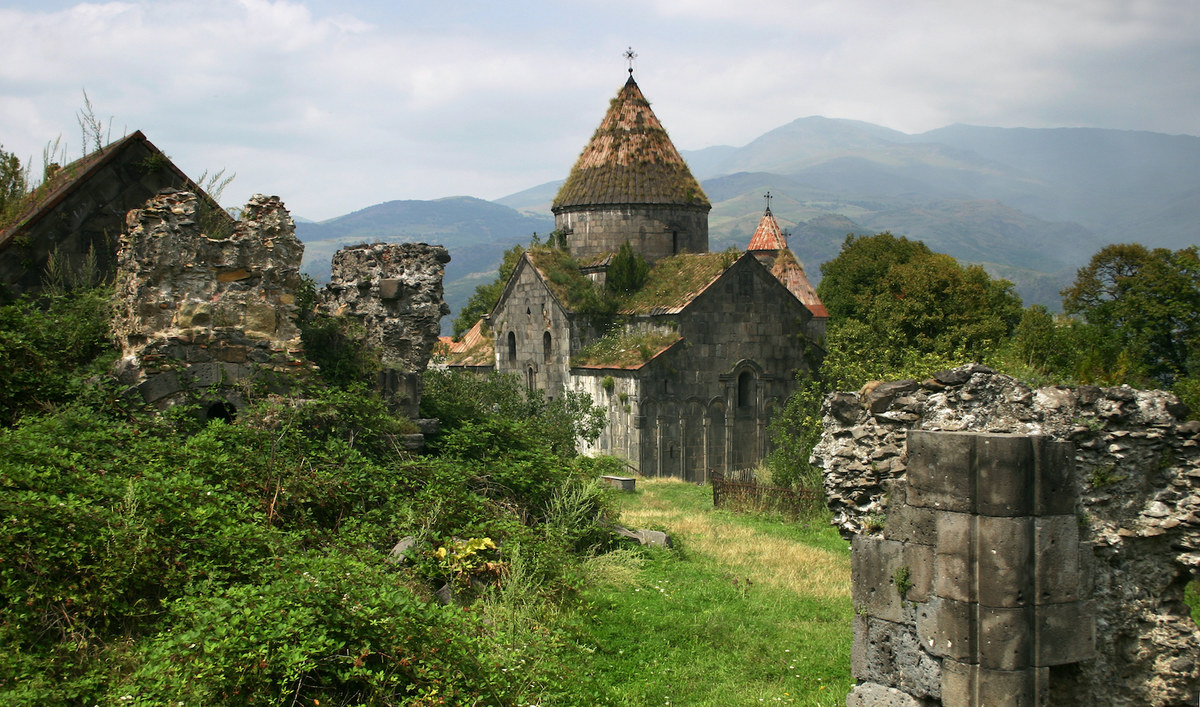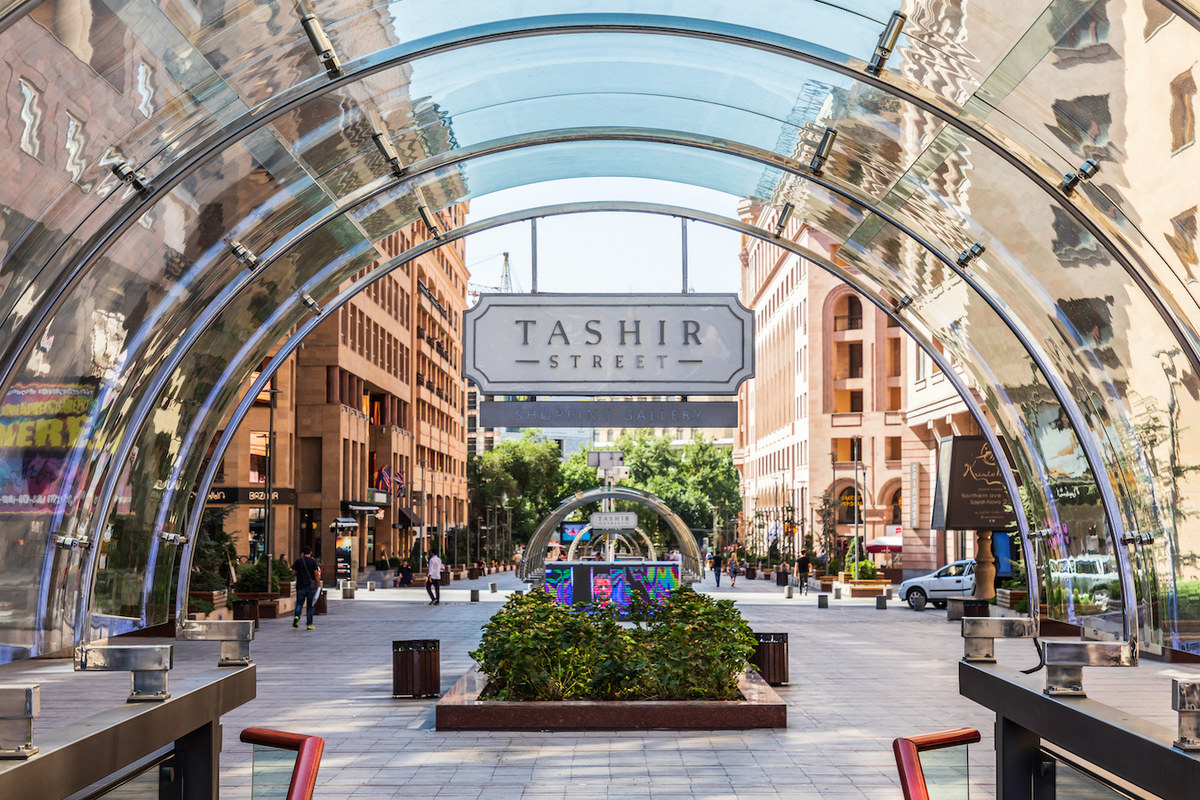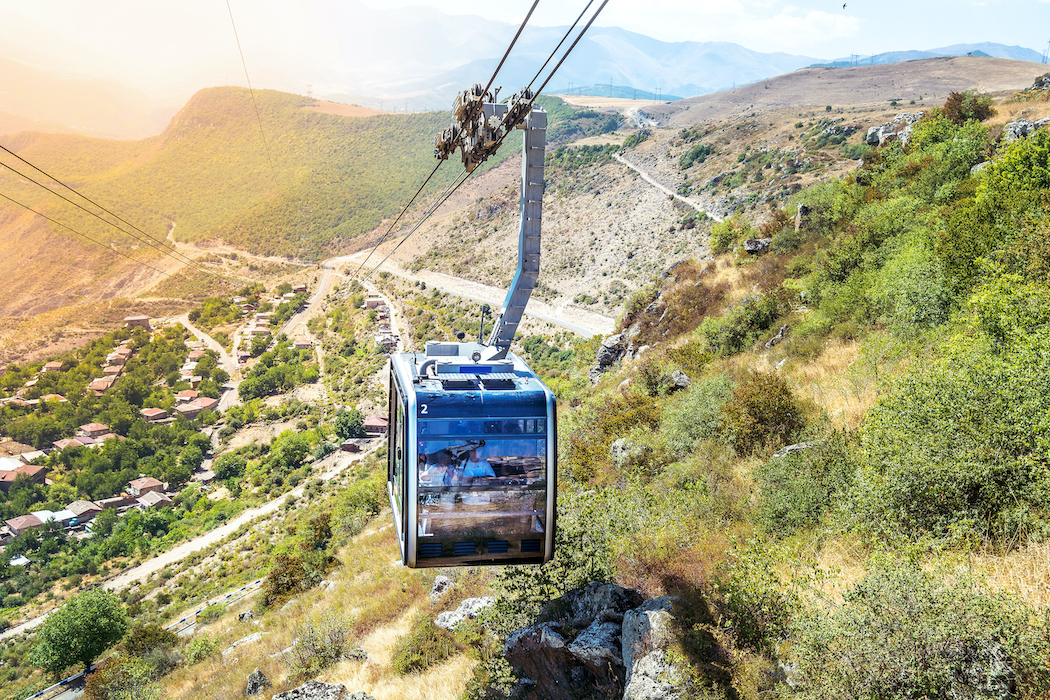RIYADH: Armenia is a country most people are vaguely aware of but might have trouble placing on a map. Tucked away in the Caucasus Mountains between Turkey, Georgia, Azerbaijan and Iran, this ex-Soviet republic is off the usual tourist track, but still attractive to curious travelers.
Landing in the capital Yerevan on a balmy July night, I am struck by the absence of COVID-19 precautions: A tight crowd has gathered outside the little airport and there is much kissing and embracing, and not a mask in sight.
I’m booked at a good hotel — actually The Good Hotel. Owner Anna and her colleagues Nara and Artur have a touching concern for all their guests. A lavish Armenian breakfast is served up every morning: fresh fruit, homemade jams, omelets, cheese, salads, cold cuts and crusty matnakash bread.

Sanahin Monastery is an Armenian monastery founded in the 10th century in the Lori Province of Armenia, recognized as a UNESCO World Heritage Site. (Shutterstock)
Yerevan is a juxtaposition of high-end luxury and harsh poverty. Strolling down the tree-lined boulevards, with their elegant pink-stone buildings and boutiques selling $4000 alligator-skin handbags, you are just a few steps away from scrappy neighborhoods where time has stood still for half a century. Russian-made Lada cars from the 1970s, belching diesel fumes, are interspersed with Bentleys and Maseratis — a typical post-Communist scenario of shady oligarchs lording over ordinary people getting by on $300 a month.
“We all have big families,” my barber tells me. “And we depend on each other. That’s the only way to survive in this country. The other option is just to leave — there are nine million Armenians around the world, and only three million in Armenia.”
The cost of a visit here is cheap. I spend no more than S50 a day, including accommodation. Five of the pink plastic tokens for a metro trip cost just a dollar.

Lake Sevan is a large, high-altitude lake in eastern Armenia. (Shutterstock)
I embark on a road trip to the north, near the Georgian frontier. The smooth highway at times becomes a rough dirt track, winding through grassy hillsides and valleys before ascending into wilder mountainous regions. I stop in Alaverdi, a small town on the banks of the Debed River, at the foot of a steep valley.
Irina, landlady of the charming Iris B&B, serves a delicious supper of charcoal-grilled chicken and vegetables. “I trained in Moscow as a cellist and orchestra conductor”, she tells me. “I had a good career there, but one day I had enough and returned here. It’s a simple life, but I love it and I love to share it with visitors.”
The Soviet Union may be gone, but Armenia remains deeply stamped by it. Most older Armenians speak Russian as a second language; only younger people tend to speak English.

Yerevan shopping street. (Shutterstock)
Fortified by another legendary Armenian breakfast, I head to the alpine village of Sanahin. It’s Sunday, and a group of schoolchildren are performing folk dances in the garden of the monastery — the music and dances almost identical to that of eastern Turkey.
Nearby is a museum dedicated to the Mikoyan brothers — two heroes of the Soviet Union. Artyem Mikoyan was the chief designer of the MiG jet, while his brother Anastas managed food distribution for the whole of the USSR. Outside the museum is an actual MiG jet. How it was brought up the mountain, I do not know.
I drive south, through the Debed River Canyon — a deep chasm that continues for at least 50 kilometers. After a night on the shores of the high-altitude Lake Sevan, I return to Yerevan and discover surely the most pleasant spot in the city: The café in Lovers’ Park.

Wings of Tatev is a 5.7 km cableway between Halidzor and the Tatev monastery in Armenia. (Shutterstock)
I head off once again, this time south to the town of Goris, near the recent warzone of Nagorny-Karabakh. The area is safe now, but there are still signs of the conflict.
In contrast to its decaying Soviet-era buildings, the area around Goris is beautiful. It sits on the banks of a little river, and on the adjacent hillside are pointed sandstone rock formations, similar to the ‘fairy chimneys’ of Cappadocia in central Turkey. It is a good base for further excursions; to the ‘Wings of Tatev’ — the world’s longest cable car (a breathtaking ride of 5.7 kilometers) — and Karahunj, the ‘Stonehenge of Armenia’ — a prehistoric circle of hewn rocks.
Driving back to Yerevan, I meander through lush vineyards, undulating grain fields and rugged mountain passes — all lingering images of a country unlike any other.














